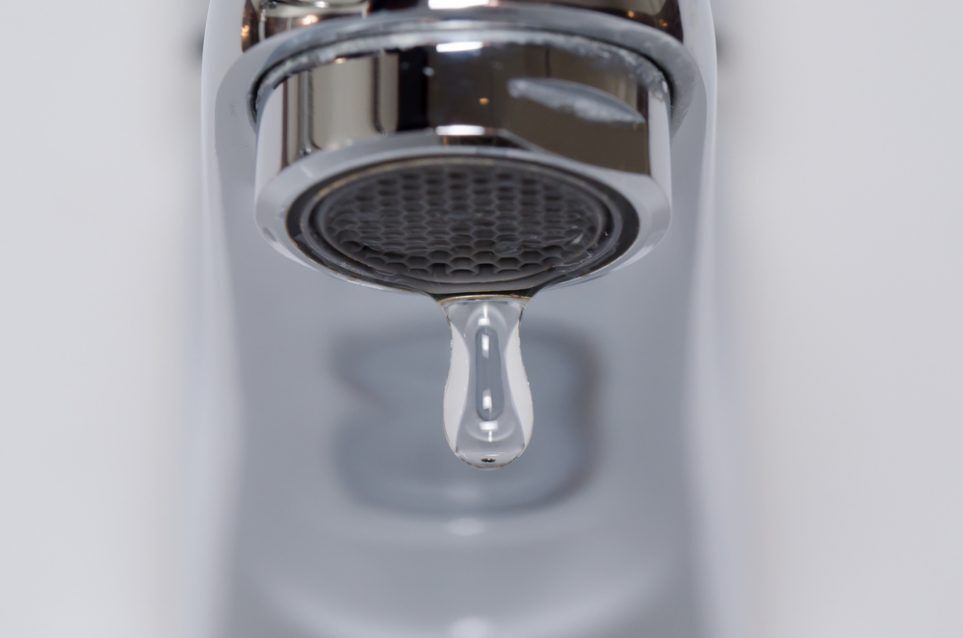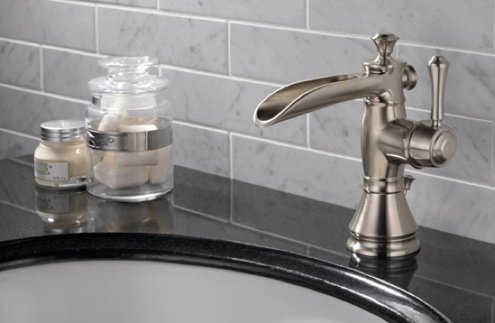Which It's Crucial to Correct a Leaking Faucet
Which It's Crucial to Correct a Leaking Faucet
Blog Article
Right here down the page you might get some awesome content about Why Are My Faucets Dripping (And Can I Fix It Myself)?.

Leaking taps might look like a minor trouble, yet their influence surpasses just the nuisance of the audio. From drainage to sustaining unneeded financial costs and wellness threats, overlooking a leaking faucet can cause various effects. In this article, we'll look into why it's vital to resolve this typical family issue quickly and properly.
Waste of Water
Ecological Influence
Dripping taps contribute dramatically to water wastage. According to the Environmental Protection Agency (EPA), a solitary tap dripping at one drip per second can squander greater than 3,000 gallons of water each year. This not just pressures water sources but also affects environments and wild animals based on them.
Step-by-Step Guide to Fixing a Dripping Faucet
Devices Called for
Prior to trying to take care of a leaking faucet, gather the necessary devices, consisting of a flexible wrench, screwdrivers, substitute parts (such as washers or cartridges), and plumber's tape.
Usual Tap Issues and Their Solutions
Determine the type of tap and the particular issue creating the drip. Typical problems consist of worn-out washing machines, rusty valve seats, or damaged O-rings. Refer to manufacturer directions or online tutorials for detailed guidance on repair services.
Financial Costs
Boosted Water Costs
Beyond the ecological effect, trickling faucets can pump up water expenses considerably. The built up waste with time translates into higher energy expenditures, which can have been avoided with prompt fixings.
Possible Residential Property Damages
In addition, long term trickling can bring about harm to components and surface areas bordering the faucet. Water build-up can create discoloration, rust, and even structural issues if left neglected, leading to extra repair expenses.
Wellness Worries
Mold and Mildew Growth
The continuous existence of dampness from a dripping tap creates an ideal atmosphere for mold and mildew development. These fungis not just jeopardize interior air quality but additionally position health risks, specifically for people with breathing conditions or allergies.
Waterborne Diseases
Stagnant water in dripping faucets can become a breeding ground for bacteria and various other virus, boosting the danger of waterborne illness. Pollutants such as Legionella germs grow in stagnant water, potentially leading to major health problems when ingested or breathed in.
DIY vs. Expert Repair
Pros and Cons of Do It Yourself Repair Service
While some might attempt to fix a dripping tap themselves, do it yourself fixings include their very own set of challenges. Without proper knowledge and devices, DIY attempts can worsen the problem or result in insufficient repair work, prolonging the problem.
Advantages of Working With an Expert Plumber
Hiring a specialist plumber makes certain that the underlying source of the leaking faucet is resolved successfully. Plumbing professionals possess the experience and equipment to diagnose and fix tap issues efficiently, saving time and decreasing the danger of additional damages.
Environmental Responsibility
Specific Contribution to Conservation
Taking obligation for fixing dripping taps aligns with wider initiatives towards water preservation and ecological sustainability. Every person's actions collectively make a substantial influence on maintaining priceless sources.
Lasting Living Practices
By prioritizing prompt repairs and embracing water-saving routines, people add to sustainable living techniques that benefit both present and future generations.
Preventive Measures
Normal Maintenance Tips
To avoid trickling taps, carry out regular upkeep such as cleaning up aerators, inspecting for leakages, and changing worn-out parts immediately. In addition, think about setting up water-saving tools or updating to much more efficient fixtures.
Value of Prompt Repairs
Addressing leaking faucets as soon as they're discovered prevents further water wastage and possible damages, inevitably saving both water and money in the future.
Effect On Building Value
Assumption of Well-Maintained Residential Or Commercial Property
Maintaining a home in good condition, including addressing maintenance issues like dripping faucets, boosts its regarded worth and value among possible purchasers or tenants.
Influence on Resale Worth
Properties with properly maintained plumbing fixtures, consisting of faucets, command greater resale values in the property market. Dealing with trickling faucets can add to a favorable perception during building evaluations and arrangements.
Conclusion
Dealing with a trickling tap goes beyond simple ease; it's an important step toward saving water, lowering economic costs, and safeguarding wellness and property. Whether through DIY repairs or professional assistance, taking action to fix trickling taps is a little yet impactful method to promote responsible stewardship of resources and contribute to a healthier, much more sustainable future.
Why Are My Faucets Dripping (And Can I Fix it Myself)?
Causes of a Dripping or Leaking Faucet
Whether you’re hearing drops of water falling and hitting a sink, or noticing water ooze out from the base of the spout, you shouldn’t ignore a dripping or leaking faucet. And, the good news is, sometimes you can fix the problem yourself.
In this article, we’ll review a few common causes of dripping and leaky. We’ll also walk you through some basic ways to find the problem and handle it without calling anyone — and let you know when to call in a pro.
But, no matter what the cause, or whether you can handle it on your own, the sooner you address it, the better.
Each drip may be a tiny amount of water. But, they all add up quickly. According to the U.S. Geological Survey, one faucet losing one drop every 20 seconds — five a minute — wastes around a liter of water every day, and 173 gallons a year.
Add in more than one in your house, and it’s a lot of water to waste. So, we’ll help you get to the bottom of things quickly.
Four Reasons Your Faucet May Be Dripping
Aerator is Damaged or Unseated Valve Seat is Corroded O Ring is Loose or Worn Out Part of the Assembly is Loose Aerator is Damaged or Unseated
If you unscrew the end of your faucet, you’ll find the aerator. It’s the little stem piece with a screen on it that shuts off the water circulation.
If it’s damaged, or if it’s not sitting right, it will allow water to pass through.
Valve Seat is Corroded
Next is the valve seat, which is connected to the washer. If the washer wasn’t in place correctly, then it could have ground against the seat. Over time, this damages the valve seat.
The problem could also be corrosion: Over time, the part has worn out, and it’s now allowing water to pass through.
O Ring is Loose or Worn Out
Since the o ring is only a small rubber gasket, it’s a common reason why the faucet is dripping. You’ll find it at the base of the faucet, and it’s there to keep water from coming out where it’s not supposed to.
However, it’s common for the o ring to wear out over time. When it does, you’ll notice a drip.
Part of the Assembly is Loose
So far, we’ve looked at a few small, specific parts. But, the problem could be anywhere in the assembly if something’s out of place.
Even if a part isn’t damaged, over time, it may have become loose or dislodged. It could be the parts we mentioned, or the aerator at the tip of the faucet, the stem itself,
Can I Fix a Leaky Faucet Myself?
Depending on the problem, and how handy you are, there’s a chance you can fix a leaky faucet without calling a professional. But, you do run the risk of making the problem worse.
If it’s a small drip, you can certainly try a few troubleshooting tactics. We’ll walk you through them in a moment.
But, no matter what, your first step should be shutting off the water coming into the faucet. You should find a shutoff valve under the sink on the pipes leading to it. Turn each one clockwise until they close tightly.
Next, make sure you have the right tools for whatever you’re attempting. It’s tempting to make do with what you have. But, you need the right ones for a reason: You’re often dealing with small parts that can break if you handle them carelessly.
If you’re feeling confident, here are some places to start.
Items Near the Tip of the Faucet
A few of the parts we mentioned — particularly the valve seat and washer — are located at the tip of the faucet where the water comes out. They’re easy to access, making it a good place to start.
Check the O Ring
To check the o ring, you’ll need to take off the spout at the base. It’s easiest on kitchen sinks with long spouts, versus the smaller, bulkier base on most bathroom sinks.
Either way, this can be tricky, so do it carefully and don’t force anything. If it’s not coming right off, you’re much better off calling in a pro than possibly breaking something.
For a kitchen sink, there’s usually a nut or coupling assembly at the base of the spout. These often slide off easily without using any tools.
Once you’ve disassembled those parts, gently but forcefully twist off the spout.
Then, you can see the o rings. There should be two of the rubber gaskets on the base. If they look worn or damaged, replace them, and see if that solves the problem.

Hopefully you enjoyed our topic about Should I Repair or Replace a Leaky Faucet?. Thank you so much for taking a few minutes to read through our post. Do you know somebody who is inquisitive about the subject? Take a moment to promote it. Thank you for your time invested reading it.
Report this page